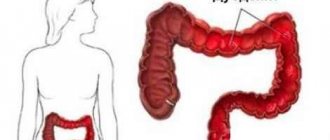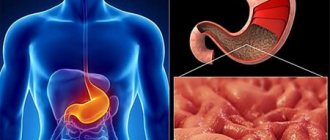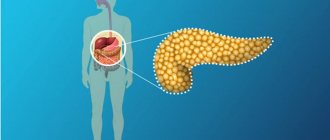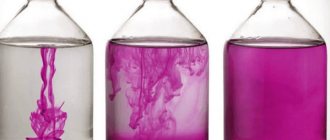- December 20, 2019
- Gastroenterology
- Evgenia Tsaruk
Giardia in the liver is a protozoal infection that is provoked by pathogenic microorganisms. When infected, patients experience abdominal pain, stool problems, and bloating. At the same time, many people experience the formation of allergic, neurotic and hepatolienal syndrome.
Not everyone knows why Giardia is dangerous in adults in the liver. Once in the human gastrointestinal tract, these single-celled organisms begin to multiply intensively. In adults, Giardia infection is more similar to signs of liver and biliary tract diseases. But the symptoms of giardiasis will not always be observed. It has been determined that out of 40% of sick people, medical manifestations of the invasion can be traced in only 20%.
Giardiasis of the liver is very common. Statistics show that in civilized countries it affects from 3 to 5% of the population, and in developing countries - from 10 to 15%. Most medical parasitologists are convinced that the real number of patients is much higher. This is due to the asymptomatic course of the disease in a large proportion of infected people. How to get rid of lamblia in the liver in a child and an adult? About this in our article.
Causes of the disease
The main distributor of Giardia is an infected person. It is he who releases mature parasite cysts into the external environment. They leave the patient's body with feces.
Carriers of the disease are dogs, cats, rabbits and other animals. A variety of insects can have pathogen larvae on their paws. The mechanism of infection is fecal-oral. Microorganisms can enter the human body through water, food and household contact.
It should be noted the reasons why Giardia appears in the liver:
- Violation of personal hygiene rules.
- Eating foods contaminated with cysts.
- Drinking raw water. Although all tap water entering residential premises goes through several stages of treatment, it may contain Giardia cysts. Of course, the risk of infection increases significantly when drinking water from open sources.
- Poor sanitary living conditions. In this case, we are talking about the abundance of insects (for example, flies) in the living room, since they are considered spreaders of infection.
- Sharing objects with an infected person.
- All kinds of contact with soil pose a potential threat.
Infection of the population will be higher, the greater the environmental pollution, the worse the condition of the water supply and sewage system, and the lower the degree of sanitary and educational work in a certain locality. These reasons explain the large percentage of infected patients in developing countries.
It is worth noting that the threat of infection in adulthood is not as high as in childhood. The problem is that the digestive system of an adult is more advanced than that of a child and has an aggressive environment for parasites. Therefore, if several Giardia cysts enter the gastrointestinal tract, infection may not occur.
In addition, most adults know how to maintain personal hygiene, do not put everything in their mouth, and wash their hands before eating. Small children are not yet accustomed to this. For example, when playing in the sand, they may pick up candy or an apple with dirty hands.
The likelihood of infection increases with the following predisposing factors:
- Congenital defects and pathologies of the formation of the biliary tract.
- Diseases of the digestive system, accompanied by low acidity and deterioration of enzymatic activity.
- Surgical operations in the stomach and duodenum.
- The use of low protein diets.
- Poor nutrition, which leads to dystrophy.
The maximum activity of giardiasis incidence is recorded in spring and summer.
How to recognize the symptoms?
Giardia in adults and children may not be detected for a long time, which causes serious functional disorders of the liver. General signs of the disease can also be mistaken for other liver or intestinal diseases. It is possible to identify deviations at the initial stages with the help of pain syndrome, which manifests itself under the right rib. There are other symptoms of Giardia in the liver in adults:
- impaired functioning of the biliary tract;
- inflammatory reaction in the gallbladder;
- the appearance of a whitish coating on the tongue;
- unpleasant, bitter taste in the mouth;
- enlargement of the liver and changes in its structure;
- long-term pain that occurs when eating food is not taken on time;
- impaired appetite;
- nausea and vomiting;
- heartburn;
- increased accumulation of gases;
- problems with stool;
- manifestation of asthenoneurotic syndrome;
- itchy rashes on the skin and the occurrence of other allergic reactions in the eyes, nose, and upper respiratory tract.
Signs of infection
Symptoms of Giardia in adults appear depending on how long ago the infection occurred. In some people, symptoms do not appear immediately after the parasites penetrate the gastrointestinal tract. A person becomes a carrier of the infection, but there will be no symptoms of the disease. If during infection a large number of parasites have entered the body, the symptoms of Giardia in adults will be as follows:
- Hepatolienal syndrome. This is a painful condition characterized by enlargement of the liver and spleen.
- Dyskinesia of the biliary tract, accompanying the development of cholecystitis.
- Dyspeptic disorders, problems with stool (constipation is replaced by diarrhea), the appearance of foamy stools. If in the first days of the disease the stool was liquid, then later it becomes greasy. Patients with Giardia are often diagnosed with enteritis, enterocolitis, and duodenitis.
- Abdominal discomfort, bloating, significant pain in the intestinal tract, as well as in the navel area. Belching and heartburn are often observed with giardiasis.
- Allergic reactions. This is a fairly indicative sign, especially if the person has not previously suffered from allergies. The onset of this pathology can occur differently in each person (from itching and small rashes to symptoms of atopic dermatitis). Some people develop symptoms of asthma or bronchitis.
- One of the characteristic symptoms of giardiasis in adults from the skin is dryness, pallor or yellowness, and flaking. Cracks often appear in the corners of the mouth, so-called jams. Such signs are caused by metabolic pathologies and deterioration of the immune system.
- Giardiasis is accompanied by constant poisoning of the body with toxins. which negatively affect the functioning of the nervous system and the functioning of all organs. For this reason, the patient is almost always prone to depression, despondency and nervous breakdowns. Nervousness increases, a person gets tired faster and becomes more restless. Many experience nausea, loss of appetite, and headaches.
- Patients often complain of restless dreams, waking up at night, and in some cases, insomnia develops, which significantly worsens the quality of life of the infected person.
Causes and symptoms of giardiasis of the liver
The microorganisms that cause the disease are flagellated protozoa, representatives of the species Giardia lamblia (Giardia duodenalis). Trophozoites are a mobile, vegetative form. Under unfavorable conditions, oval-shaped cysts or spores are formed. Trophozoites penetrate into the bile ducts and liver.
Reference. Giardiasis is a protozoal disease; it is not an infection with helminths or worms (multicellular parasitic worms).
The symptoms and treatment of giardiasis are in many ways similar to helminthic infestations. The goal of therapy is not only to remove Giardia from the liver, but also to eliminate the consequences for the body from the vital activity of microbes.
Incubation of the parasite in the intestine
Giardia is spread through fecal particles. Cysts are transmitted through contaminated food and water. Infection occurs within a few days, but infection does not necessarily mean illness. After ingestion of the cysts, Giardia develops in the human intestine for some time. The trophozoites then enter the large intestine, form cysts, and are released into the environment in feces.
The incubation period lasts from 3 to 25 days. Symptoms often appear 5–10 days after infection. After 1–1.5 weeks, giardiasis can become chronic.
Symptoms
Acute giardiasis manifests itself in infants and young children as food poisoning. The chronic form is accompanied by inflammation of the intestinal mucosa and biliary tract.
Signs of giardiasis of the liver
Giardia migrates from the duodenum to the bile ducts. The infection causes abdominal pain localized in the right hypochondrium, fever, severe diarrhea, flatulence, vomiting, weight loss, and dermatitis. Occasionally, protozoa enter the bloodstream through small ulcers in the intestinal mucosa, are transported to the liver, and parasitize the organ, destroying it from the inside.
Signs of chronic damage to the bile ducts and liver by Giardia:
- unstable stool, alternating diarrhea and constipation, yellowish color of stool;
- sleep disturbances, irritability and other neurotic disorders;
- skin itching, rashes and other allergic manifestations;
- nausea, pain in the upper right part of the abdomen;
- pale or dirty skin tone;
- cracks in the corners of the mouth.
Important! Symptoms of giardiasis intensify after ARVI, stress due to a weakened immune system.
The World Health Organization has proposed a classification that distinguishes between the asymptomatic form (carriage) and clinically pronounced giardiasis. The intestinal variety manifests itself in the form of enterocolitis (inflammation of the intestines).
Chronic giardiasis causes damage to the organs of the hepatobiliary system (liver, gallbladder and ducts). Biliary dyskinesia and cholecystitis develop. Giardiasis often accompanies chronic hepatitis B.
Diagnostics
There are many ways to determine Giardia in the liver. It is very difficult to identify parasites in a child under 10 years of age. For this age group of patients, it is possible to take only feces for research, which must be warm and delivered to the laboratory within 90 minutes after the collection of the biomaterial (no later). This makes it difficult to conduct research and get correct results. It should also be taken into account that Giardia cysts are not constantly excreted in feces. Therefore, to obtain a reliable picture of the patient’s condition, it is necessary to donate warm stool 3-5 times a month.
To diagnose hepatic giardiasis, first determine the presence of infection in the intestines. If the stool test result is positive (cysts are detected), a course of therapy is prescribed. If the test gives a negative result (no cysts were found in the stool), but the person exhibits characteristic signs of infection with parasites, more informative tests are prescribed. Giardia in the liver. Giardia in the liver can be detected by various methods. Basically, they are used only for adults.
Conclusion
Adults often become carriers of cysts, and children are affected (up to 80% of cases). The first symptoms of giardiasis are similar to helminthic infestations. Parasitic infection is most dangerous for young children and patients with reduced immunity.
Giardiasis often becomes chronic after a short, sometimes imperceptible, acute period. The small intestine and gallbladder ducts are mainly affected. The most effective is step-by-step drug therapy for chronic giardiasis. For drug prevention of the disease, the same drugs are used that are prescribed to get rid of parasites.
Stool analysis
We have already discussed the simplest and most widely available method of detecting parasites above. This is a stool analysis that can detect not only cysts, but also the vegetative form of microorganisms. You cannot use an enema to take the test. A special diet is not required, but the medical staff does not recommend that the patient eat foods containing a lot of fiber, liver in any form, a day or two before donating the biomaterial, since fragments of this food in the feces make it difficult to detect Giardia. Also, 10-14 days before the study you need to stop taking antibiotics and sorbents.
If the patient has undergone intestinal examinations using barium, the procedure for collecting biomaterial for lamblia is postponed for 5-7 days.
How to identify: basic diagnostic methods
Diagnosis includes taking a medical history and a series of laboratory tests. The patient informs the doctor about all symptoms and discomfort. Most often, it is impossible to make a final diagnosis based on subjective symptoms. To determine the cause that caused the symptoms, the following studies are carried out:
- coprogram (stool analysis);
- Ultrasound of the liver to determine damage to the organ;
- serological diagnostics;
- immunological study, which is aimed at identifying the stage of the disease;
- A general blood test will help check for Giardia in the liver (bilirubin will be increased if they are present).
Note! Giardiasis in adults can be accompanied by other diseases: cholecystitis, hepatitis, enteritis, cholangitis. It is impossible to independently determine the presence of Giardia in the liver based on external symptoms. It is imperative to consult with an infectious disease specialist and undergo the necessary laboratory tests.
Immunological analysis of blood and stool
The study is carried out on feces in which Giardia antigen GSA 65 can be found. As a rule, immunochromatic and enzyme immunoassay test systems that react to the presence of antigens are used. Their sensitivity and specificity are determined. Another method consists of examining blood serum for the presence of immunoglobulins. If an elevated level of the IgG type is detected, it is concluded that the patient has giardiasis in the acute stage. Immunoglobulins appear 2 weeks after invasion. The method is considered more effective, but is used extremely rarely in practice.
Diagnosis of Giardia in the liver
If there are symptoms characteristic of giardiasis, a thorough examination should be carried out, which may include the following methods:
- Carrying out a coprogram. Giardia cysts can be found in feces. The difficulty of diagnosis lies in the fact that the formation of cysts does not occur regularly, but at intervals of several days or even weeks. Therefore, for a more accurate result, it is recommended to be tested for Giardia several times with an interval of 7 - 12 days. For the study, it is necessary to collect up to 10 g of feces and submit it for analysis within 24 hours after collection. Giardia in vegetative form can be detected within 15 minutes after receiving feces.
- Blood test for the presence of specific antibodies. This research method is not informative enough and can often give a false positive result. Its essence is to identify antibodies that appear in the blood during helminthic infestation. However, the presence of such antibodies does not necessarily indicate that a person is currently ill. Perhaps he had giardiasis in the past, and the antibodies remained in his blood. In addition, immunoglobulins may indicate the presence of various parasites, not necessarily Giardia.
- In a clinical blood test in a patient with giardiasis, one can observe an increase in the number of eosinophils, leukocytes, lymphocytes, increased ESR and low hemoglobin.
- Duodenal examination. This method involves examining bile for the presence of Giardia cysts, but it is not performed in children under 10 years of age.
- Ultrasound of the liver. An ultrasound examination is prescribed if the patient exhibits symptoms characteristic of hepatic giardiasis. However, it will not be possible to see Giardia themselves even with the best equipment. It is possible to indirectly say that a person has Giardia in the liver if there are characteristic pathological processes in this organ or the pancreas. The hepatic or other lamblias themselves do not differ from each other.
- Liver tests. Liver tests will also not be able to detect Giardia, but only the results of their activity in the body.
Duodenal sounding
This method may be ineffective if Giardia parasitizes only in the middle or distal parts of the small intestinal tract. In other cases, the study of a duodenal sample demonstrates better effectiveness than the study of feces. To collect secretory fluid, a special three-channel probe is used, which is inserted into the patient’s duodenum. A specimen is obtained under vacuum conditions and examined under a microscope. Vegetative forms of Giardia can be detected in biomaterial already during the first analysis. However, this method is quite painful. It is not used to diagnose children.
What is giardiasis in the liver
Giardiasis begins to actively develop after several parasites enter the body . Passing through the stomach, Giardia cysts are freed from their shell, and they enter the intestine in the form of trophozoites. They settle primarily in the small intestine, since this is where active absorption of nutrients and vitamins occurs. In the intestine, Giardia is attached to the walls with the help of strong suckers and flagella.
Giardia reproduces very quickly. For the appearance of a new individual, 10 minutes are enough; in 10 hours, their volume doubles. For 1 sq. cm of intestine can account for up to a million parasites. After 40 days of their life, the parasites die and are excreted along with waste products naturally.
If the conditions for the development of the parasite are favorable, after a while their number becomes too large and Giardia begins to actively migrate throughout the body in search of new habitats. Giardia cannot live in the liver, since it is not a hollow organ and there is no habitat favorable for them.
During normal functioning of the body, Giardia, entering the bile ducts and hepatic ducts, enters the cyst stage. Since this form is static and cannot attach to the walls, they are excreted from the body through the intestines along with feces.
In cases where there are certain disturbances in the functioning of the biliary tract or the body produces an insufficient volume of bile, parasites are able to survive in the hepatic ducts. In this case, some of the lamblia die, clogging the ducts and leading to intoxication of the entire body.
The most viable trophozoites, with the help of their flagella, try to gain a foothold in the lumens, trying to move to more favorable conditions.
As a result of mass migration of Giardia, blockage of the ducts and bile ducts can occur. If proper treatment is not started in time, pathological changes in organs are inevitable.
In addition, although there is no food for Giardia in the liver ducts, their activity as a result of attempts to suck leads to mechanical damage.
How to treat lamblia in the liver
Treatment of the disease is the responsibility of a parasitologist. You cannot prescribe medications for yourself. Treatment is carried out in three stages.
Preparatory. First, you should create conditions in the body that are uncomfortable for parasites, under which Giardia will slow down its rapid reproduction. For this purpose, the patient is transferred to a dietary regimen with the consumption of only permitted foods. Extremely limit carbohydrate foods and sweets. The diet should be dominated by vegetables, grain porridges, bran, and fruits. At the same time, the patient should take choleretic drugs (Allohol, Karsil, Hollenzym), cholekinetics (Mannitol), cholespasmolytics (Eufilin, preparations with barberry and belladonna) and antihistamines (Tavegil, Dexamethasone and their analogues).
It is necessary to carry out fasting days from time to time. At the same time, antihistamines and choleretic substances are prescribed. In order to normalize digestive function, the patient is prescribed enzyme medications, such as Festal, Pancreatin or their analogues.
Basic. At this stage of getting rid of pathogenic microorganisms, antiprotozoal drugs are prescribed. Giardia in the liver can be treated with the following drugs: Trichopolum or Metronidazole, Tinidazole, Ornidazole or Tiberal, Furazolidone, Nemozol. These are all drugs of choice. As a rule, the doctor prescribes 2 courses of therapy. These drugs have high activity against Giardia, but practically do not cause adverse reactions in humans.
Restorative. This is the final stage. It consists of restoring the functioning of the patient’s body systems. At the final stage of therapy, doctors prescribe enterosorbents, vitamin complexes, and immunostimulants. The use of herbal medicine is acceptable. The need to take one or another pharmaceutical drug is determined by the doctor.
The prognosis is quite favorable. With qualified implementation of the treatment regimen, the effectiveness reaches 95%. In order not to become infected again, you must adhere to simple principles for the prevention of giardiasis: do not drink raw water, especially from open sources, keep your hands and premises clean, thoroughly wash all vegetables and fruits before eating, destroy flies and cockroaches, do not swim in questionable bodies of water , at the first signs of illness, consult a doctor and do not self-medicate.
Now let's look at how to treat lamblia in the liver with folk remedies.
Necessary treatment
It is possible to eliminate the pathological signs of Giardia in the body of an adult and a child using complex therapy. The patient is prescribed antiparasitic medications, which must be taken for 21 days. The following drugs effectively cope with pathology:
- "Furazolidone";
- "Trichopolus";
- “Tiberal;
- "Trisopol";
- "McMirror."
Medicines must be supplemented with enterosorbents, enzymes and antihistamines. No less important when treating lamblia in the liver is the diet that is followed during and after treatment procedures. Thanks to special nutrition, it is possible to normalize liver and intestinal function and strengthen the immune system. The patient needs to eat fresh vegetables and fruits, various cereals, and vegetable oils. If possible, avoid foods containing carbohydrates. You can also supplement conservative treatment for Giardia in the liver with folk remedies. Sauerkraut brine, coconut pulp and coconut milk are recommended, which are consumed orally before meals.
To eliminate giardiasis, you can use pumpkin seeds, which are finely ground beforehand. The product is combined with honey and diluted with water to obtain a creamy mixture. Consume no more than 150 grams daily before meals.
Healers' recipes
All kinds of microbes, literally and figuratively, have been poisoning human life for centuries. Over many years of resisting these microorganisms, traditional healers have created many recipes that help if Giardia appears in the liver. What can you use, for example, garlic for? This wonderful plant saves you from dozens of pathogenic microbes, since nature has endowed it with powerful antibacterial properties. It also helps to get rid of lamblia.
You can prepare garlic infusion. You need to take 50 grams of garlic, chop it, put it in a dark glass jar. Add a glass of vodka and close tightly. Keep in a cool place for two weeks. The tincture should be consumed 40-50 minutes before meals, 30 drops once a day for a week. Before use, dilute in a small amount of water.
Treatment of giardiasis
The stages of therapy and the timing of the disease in acute and chronic forms differ significantly.
Treatment of giardiasis
| Acute form | Chronic form | ||
| The patient is prescribed an antiparasitic drug. The course of therapy is 5–7 days. | Stage 1 | Stage 2 | Stage 3 |
| Reducing intoxication. | Eradication of the parasite using drugs that kill Giardia. | Increasing immunity, preventing the proliferation of Giardia. | |
Taking a drug that kills Giardia by an unprepared patient worsens the condition of the body. In chronic giardiasis with damage to the hepatobiliary system, the number of parasites can be large. The level of toxins increases rapidly due to mass death. The symptoms of the disease sharply worsen, and severe allergic reactions occur.
First stage
Diet is required. The patient is prepared with foods rich in fiber that do not overload the gastrointestinal tract (porridge, vegetable purees, dried fruit compotes). Apple pudding, sweetened rice water, and blueberry jelly are useful. Difficult-to-digest meat and fish products, milk and fermented milk products are excluded from the diet. Carbohydrate foods are limited.
Medications indicated:
| Group | Therapeutic effect | Trade names |
| Cholekinetics, choleretic | Increases bile production | Kholosas, Hofitol, Flamin. |
| Enterosorbents | Absorb toxins | Polyphepan, Enterosgel. |
| Antihistamines | Relieves allergic manifestations | Zirtek, Eslotin, Tavegil. |
| Enzymatic | Improve digestion | Creon, Mezim, Pancreatin. |
| Probiotics and eubiotics | Normalize the composition of the gastrointestinal microflora | Lactofiltrum, Acipol, Bifiform, Yogurt (capsules). |
| Antidiarrheal | Relieves diarrhea | Enterol, Hilak forte. |
| Antispasmodics | Reduce abdominal cramps and pain | No-Shpa, Duspatalin. |
| Homeopathic | Increase bile secretion | Hepel. |
Patients over 5 years old are given tubages twice a week to relieve intoxication from metabolic products and the decay of dead Giardia. The procedure helps eliminate congestion in the gallbladder and liver, improves the outflow of bile.
Second phase
Antiparasitic agents are used. When prescribing medications, their safety and effectiveness are taken into account. Previously, metronidazole, tinidazole, and furazolidone were widely used, to which the parasites had developed resistance.
Preparations:
| Active substance | Tradename |
| Albendazole | Nemozol, Albendazole, Zentel. |
| Ornidazole | Tiberal, Ornidazole-Vero. |
| Nifuratel | McMiror. |
The choice of medication depends on concomitant diseases. When combined with ascariasis, reactive changes in the liver and gallbladder, Nemozol and Albendazole are preferable. A child with giardiasis and atopic dermatitis is prescribed Tiberal. At the same time as taking the antiparasitic drug, the course of therapy with antihistamines and enterosorbents continues.
Third stage
The patient is prescribed eubiotics and enzyme preparations to eliminate intestinal dysbiosis. Alternative medicine products are used, mainly of plant origin, with anti-inflammatory, antispasmodic, adaptogenic and multivitamin effects. The total duration of treatment for chronic giardiasis reaches 2–3 months.
Alternative Medicine Recipes
Tubage for giardiasis is carried out using a heating pad and mineral water (still). “Narzan”, “Essentuki”, “Borjomi” are suitable. In the morning, take 300 ml of mineral water (22–25°C). Place on the right side, applying a warm heating pad to the liver area. After visiting the toilet, drink 50–100 ml of mineral water. After the procedure, be sure to follow a diet.
How to get rid of Giardia using folk remedies:
- Grind 100 green walnuts, pour in 1 liter of vodka, leave for 2 weeks. The solution is filtered. Take 1 tsp. before eating.
- Infuse 50 g of crushed garlic cloves in 250 ml of vodka for a week. Take 20 drops with water before each main meal.
- Infuse 20 g of corn silk in 200 ml of chilled boiled water for 3 hours. Take 50 ml 2 times a day.
- Grind 100 pumpkin seeds, infuse in 20 ml of water with 20 g of honey. Eat within 1 hour, then take a laxative and do an enema.
- Prepare an infusion of 10 g tansy flowers and 100 g boiling water in a thermos. Take in small sips.
The menu includes natural enterosorbents. Jelly and decoctions of vegetables and fruits rich in pectins have these properties.
Horseradish
A medicine made from horseradish roots will also help. To prepare it, you need to take 3 roots of the plant, thoroughly brush off the soil, and do not peel off the peel. Cut them into small pieces and place them in a 2-liter container. Fill the container with clean, cool water, close tightly and leave in the room for three days. Then pour out the water, wash the horseradish roots, chop them, add bee honey to them in a 1:1 ratio. Mix the ingredients thoroughly until smooth and leave for another 4 days. The container with horseradish and honey must be shaken 2 times a day. Take a tablespoon before meals.
Folk remedies
To completely cure giardiasis, modern drugs are used. Traditional methods make it possible to reduce the number of parasites in vegetative form and have a depressing effect on the development of cysts.
Stopping taking the drug allows the process of development of Giardia to resume.
Horseradish is considered the most popular and accessible in the treatment of this disease.
- Wash, peel, and grate 0.5 kg of plant root.
- Place the resulting mass in a glass jar with a screw-on lid and fill with chilled boiled water.
- The product is infused for 72 hours in a dark place at a temperature of 22-24 degrees.
- The infusion must be shaken once a day.
- After 3 days, strain the resulting mixture, add honey in a 1:1 ratio, and stir thoroughly.
- Place the composition in a dark place for another 72 hours.
- To better dissolve the honey, the composition is mixed by shaking the jar once every 12 hours.
- Then stored in the refrigerator.
Take 3 times a day, 20 minutes before meals. Dosage depends on age:
The course of treatment is not limited. The product must be taken for 10 days with weekly breaks.
Diagnostic techniques
In order to find out whether Giardia can be in the liver, it is necessary to undergo a series of studies. Very often, infected patients turn to specialists in other fields with symptoms that bother them, for example, allergists, gastroenterologists, and dermatologists. The symptoms of giardiasis are similar to some other diseases, and therefore the treatment is prescribed incorrectly, which leads only to temporary relief of symptoms in some cases.
Giardia can be identified as follows:
- palpation of the liver area, pain with pressure intensifies, an enlargement of the organ is noted;
- biochemical blood test, hemogram to determine the number of monocytes and eosinophils;
- stool analysis, parasite cysts are detected in the samples;
- Ultrasound of the hepatobiliary system;
- duodenal intubation followed by examination of biological fluids;
- PCR diagnostics;
- linked immunosorbent assay.
Giardia under a microscope
Important! Despite the variety of methods used, it is not always possible to establish an accurate diagnosis the first time. Microorganisms are difficult to identify if suspicions are focused on other diseases.









